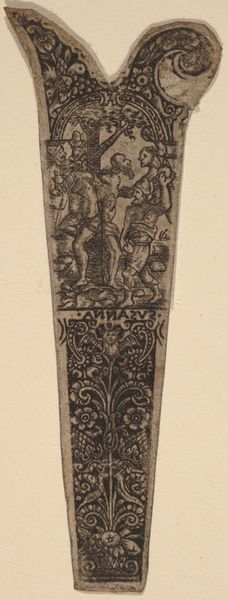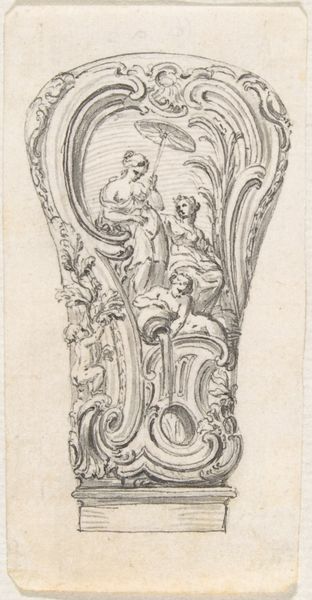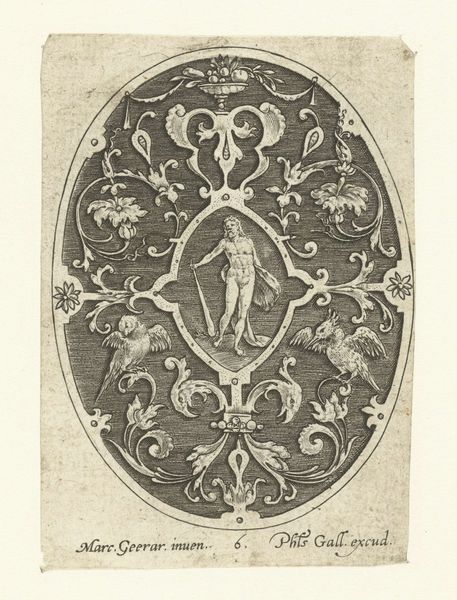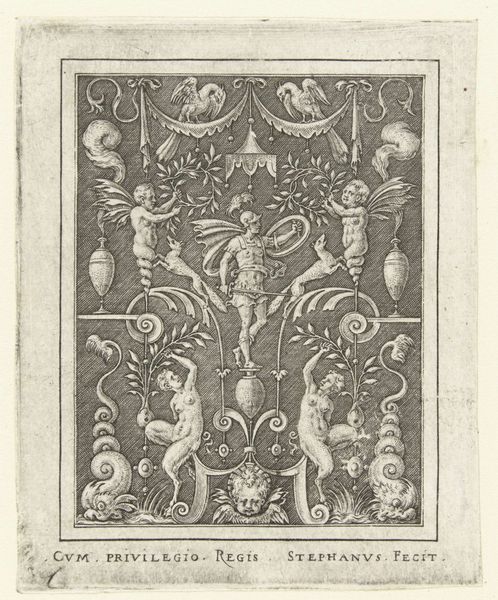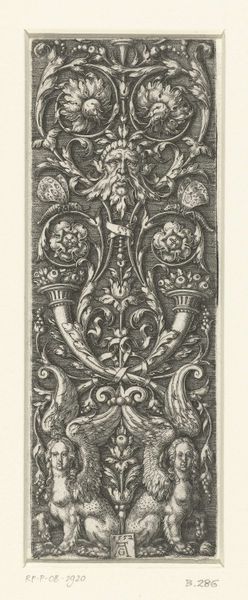
Design for a Knife Handle with the Personification of Charity 1580 - 1600
0:00
0:00
drawing, print, engraving
#
drawing
#
allegory
#
baroque
# print
#
figuration
#
engraving
Dimensions: Sheet: 3 7/16 × 13/16 in. (8.7 × 2.1 cm)
Copyright: Public Domain
Editor: We're looking at "Design for a Knife Handle with the Personification of Charity" from around 1580-1600, etched by Johann Theodor de Bry. It's a flurry of Baroque detail in print. It makes me wonder, in such a time of finery and supposed "elegance," why depict something so…wholesome, really, on a knife handle? What are your thoughts on this kind of contrast? Curator: It *is* wonderfully ironic, isn’t it? Juxtaposing violence – what a knife implies – with charity. Think about it: this isn't just some decoration; it's an allegory! We see Charity herself, surrounded by children needing her care. Perhaps the intention was to remind the user of their moral duties, even in daily acts. A tiny nudge towards ethical consumption…or maybe, you know, just opulent virtue signalling! What do you make of the composition, beyond the obvious symbolism? Editor: The composition seems busy, but in a way that keeps my eye moving. All those swirls, little flourishes...even the snails, near the bottom, look strangely ornate! I'm also interested in the contrast between the figural element in the center with all the ornamentations above and below. I mean, do the squirrels have to be *everywhere*? Curator: "Everywhere" is precisely right. De Bry was a master of detail! Consider how the design marries form and function. The knife is a tool for *cutting*, for separating. Yet the imagery calls for *togetherness*, generosity. It's a playful, paradoxical dance. It's also deeply representative of Baroque sensibilities—finding harmony through contrasting elements. This object says so much. We might reflect that even now, design can be an ethical Trojan Horse... right? Editor: Definitely. It’s incredible how much an everyday object, something so small, can tell us about the values, or at least the aspirations, of the time. Now I can never look at a knife the same way again. Curator: Nor I! Thanks for bringing such insightful questions to the table. Now, about lunch...?
Comments
No comments
Be the first to comment and join the conversation on the ultimate creative platform.

